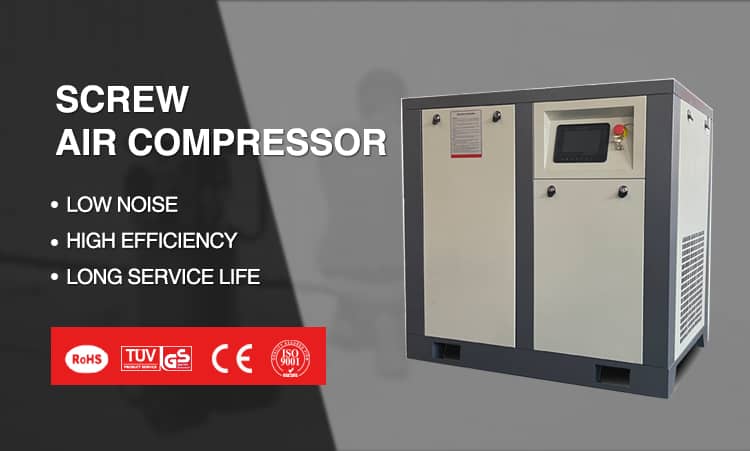air compressor blog
How to audit compressed air system
- Dec 15, 2023
A simple leak in your compressed air system can waste 20-30% of your air compressor’s output. Auditing your compressed air system can provide a blueprint for how to operate more efficiently. Today, BISON discusses how to audit your compressed air system from the perspective of a professional air compressor manufacturer & supplier, combined with our own air compressor industry experience.
Importance of compressed air system audit

A compressed air system audit is your way of determining how much production you’ve lost. It’s designed to help you identify inefficiencies so they can be fixed and save your organization money in long-term operational costs.
Implementing audit recommendations can pay for itself over an extended period. Some common recommendations from an audit may include:
- Plug previously undetected leaks.
- Prevent excess pressure within the system.
- Check air requirements.
- Replace damaged piping.
- Turn off outdated restrictions.
- Insufficient system storage
- Improper use
- Monitoring system pump
- Improve system recovery
When you can comply with these and other recommendations from the audit, your business may be eligible for several potential energy rebates, saving you even more money on utility costs.
How to audit a compressed air system

For the most accurate data logging device audit results, we recommend a professional evaluation—a diagnostic technician will use data logging tools for measuring your load profile (the difference between the CFM and PSI you’re using and what you need to do the job).
From this data, you’ll see graphs showing where you’re wasting energy (and money). This data is critical to identifying any anomalies or air losses causing your air system to overwork and overcompensate.
An audit will cover many metrics and factors, and a walkthrough assessment can be done in less than 8 hours or a few days, based on your system’s size and complexity. The things below are recommended to be checked for a complete analysis of your compressor system.
1. Eliminate leaks and pressure drops
These are the ones responsible for the majority of energy waste, so identify and repair any leaks in your air system piping. Even a 1/8-inch diameter hole in a 100 PSI system can add up to $1,200 in wasted energy over a year.
Aging pipes — throughout airline lines, especially worn joints.
Coupling – check the seals; they may be damaged by installation/use.
Drain valves – check receivers, filters, and all other equipment with valves.
Fittings — fittings may have loosened over time.
Flange connector – where the gasket will need to be replaced.
Flexible hoses – can cut or tear due to friction.
Manifold – close to closely spaced connections.
The pneumatic tool ends — Check for leaks in connectors and seals.
In addition to eliminating leaks, there are ways to reduce pressure drop throughout your air system, especially those with long air piping runs. One solution may be to essentially decrease the diameter of your piping from 3″ to 2″. Reducing pressure drops by increasing the PSI. Another solution is to reduce the distance (run) between your compressor and your air end.
2. Check the air filters
Efficient airline-clogged filters reduce energy costs by reducing flow rates and removing fewer particles over time, making your compressor work harder and allowing harmful, poorly filtered air to circulate throughout your system. They were forced to pass through. If ignored, this may require costly repairs in the future.
In order to optimize savings at the air end, we provide high-efficiency line filters. Clean or change all your filters regularly, and ensure you use the correct filters first. In order to optimize savings at the air end, we provide high-efficiency line filters.
3. Eliminate artificial demand
Air compressors Manufacturers such as BISON will use higher pressure (PSI) to overcompensate for leaks, pressure reductions, and flow variations to meet flow (CFM) demands. This creates an artificial demand capacity of 25% or more than the requirement. This can eat into your running costs, force your compressor to work harder than necessary, and waste air in the process.
Operating at the lowest possible pressure will significantly minimize energy waste, so rather than manually applying more pressure to meet demand, consider a flow controller or pressure regulator to help improve the efficiency of the air you’re already generating.
4. Consider a pressure regulator
Air pressure is closely regulated by pressure regulators, which maintain your air tools operating efficiently with minimal wasted air. Some regulators even have built-in filtration for maximum protection. Consider using them at your air end location.
5. Estimate air dryer and heating costs
A high-efficiency air dryer compressed air to generate heat and condensation quickly. Air dryers protect the longevity of your pneumatic tools and machines by cooling and removing moisture that would otherwise contaminate the air and damage your compressor tank, lines, and other components over time. Use the wrong type of air dryer, and you’ll waste money by overworking it for a purpose it wasn’t designed for.
Refrigerated air dryers will work perfectly with scroll compressors or piston or rotary screw compressors designed with a built-in aftercooler.
Otherwise, a refrigerated air dryer will work longer and twice as hard to cool the high-temperature air—resulting in wasted energy, shorter dryer life, and money on the bottom line. High-temperature air dryers are designed for this purpose and run efficiently on these heavy workloads.
Most of the compressor’s electrical energy is converted to heat energy, often wasted. Intelligent applications in your system (such as a heat recovery unit) can allow you to use this energy to offset compressor costs. Take space heating, for example. For large commercial buildings, it is possible to use the heat produced by using your compressor to warm the structure or even just the water for different hot water uses.
6. Upgrade your storage capacity
Auxiliary air tank imagines a storage reserve tank. It fills the first time and is only used once it is needed. The more storage you have, the less your compressor needs to run, allowing you to do more with fewer kilowatt hours. Remember, the longer compressed air stays compressed, the more moisture it builds up. As long as you use the extra air throughout the workday, more storage capacity can be a cost-effective solution over time.
7. Turn off the compressor
It seems simple enough, but many manufacturers leave their compressors on when not in use, such as on weekends or during off hours. This is just needless and a waste of money on energy. Switch off your compressor outside of working hours and when not in use.
Conclusion
Compressed air system audits are invaluable tools for industries that rely on compressed air. Whether it’s an energy audit to improve efficiency, a leak audit to reduce energy waste, or a system assessment for overall improvement, these audits can help reduce operational costs, improve reliability, and improve environmental sustainability, playing an essential role in increasing.
By understanding the objectives and processes of different types of audits, businesses can take proactive steps to ensure their compressed air systems operate at peak efficiency while reducing their energy footprint.
frequently asked questions about How to audit compressed air system
Is compressed air audit compulsory?
Although not legally required in some countries, it is essential to have regular compressed air audits to guarantee that your equipment is both safe to use and in good functioning order.
Some countries that require a compressed air audit include the United States, Australia and New Zealand, European countries, and the United Kingdom.
What is the best tool for detecting leaks in a compressed air system?
An incredibly small gadget called an ultrasonic acoustic detector detects the high-frequency noises connected to the leak, and is the best instrument for finding compressed air leaks. Although other gas monitors can be utilized as well, for early detection and prevention, it is also beneficial to use a checklist to help identify potential leak points, damages, and problems.
What are the most dangerous hazards that can potentially come from compressed air?
The United States Occupational Safety and Health Administration (OSHA) states that, the most dangerous hazards of compressed air are oxygen displacement, fire, explosion, toxic effects, and broken parts. For this reason, it is essential to have regular compressed air audits.
What is the method of testing compressed air?
This method involves the use of high-performance membranes. Solvent is used to dissolve oil from compressed air sample samples on these membranes, which is then subjected to infrared spectroscopy analysis. Testing for oil aerosols can be used to examine samples where high contamination levels are expected.







